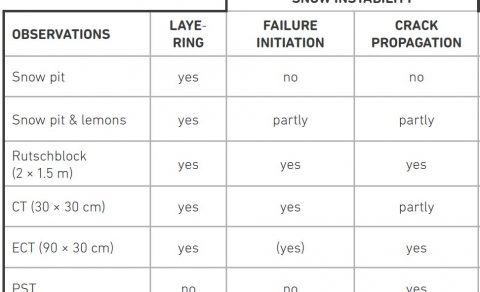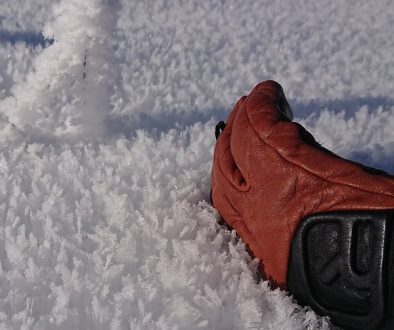Snowpack stability
Snow instability – what it means
When we talk about snow instability we want to express how likely it is for an avalanche to occur. To be precise, we’d need to say whether we talk about natural release or skier-triggering.
Low stability – in a nutshell
Low stability means that weak layers are likely to fail and cracks will propagate to release the slab that sits on top.
- A precondition is that the snowpack layering is weak (Snow profile).
- The processes of failure initiation and crack propagation both contribute to slope instability (Stability tests).
Further reading:
« […] snow instability means […] failure initiation and crack propagation [which] […] control the avalanche release probability. (TAR, 2016)

Observations
Simple Observations
Along the trip, so-called simple observations don’t ask for much effort:
- Signs of instability – i.e. recent avalanches, wumpfs and shooting cracks – are easy to observe with a little practice.
- Check the penetration depth or use the ski pole test to learn about slab densification and possible thick weak layers along your route.
- Ski cut small rolls to test their stability.
Snow pits
If clues for snowpack stability are missing, snow pits can provide such information – but it is harder to come by. The table on right shows the information we can draw from field observations.



